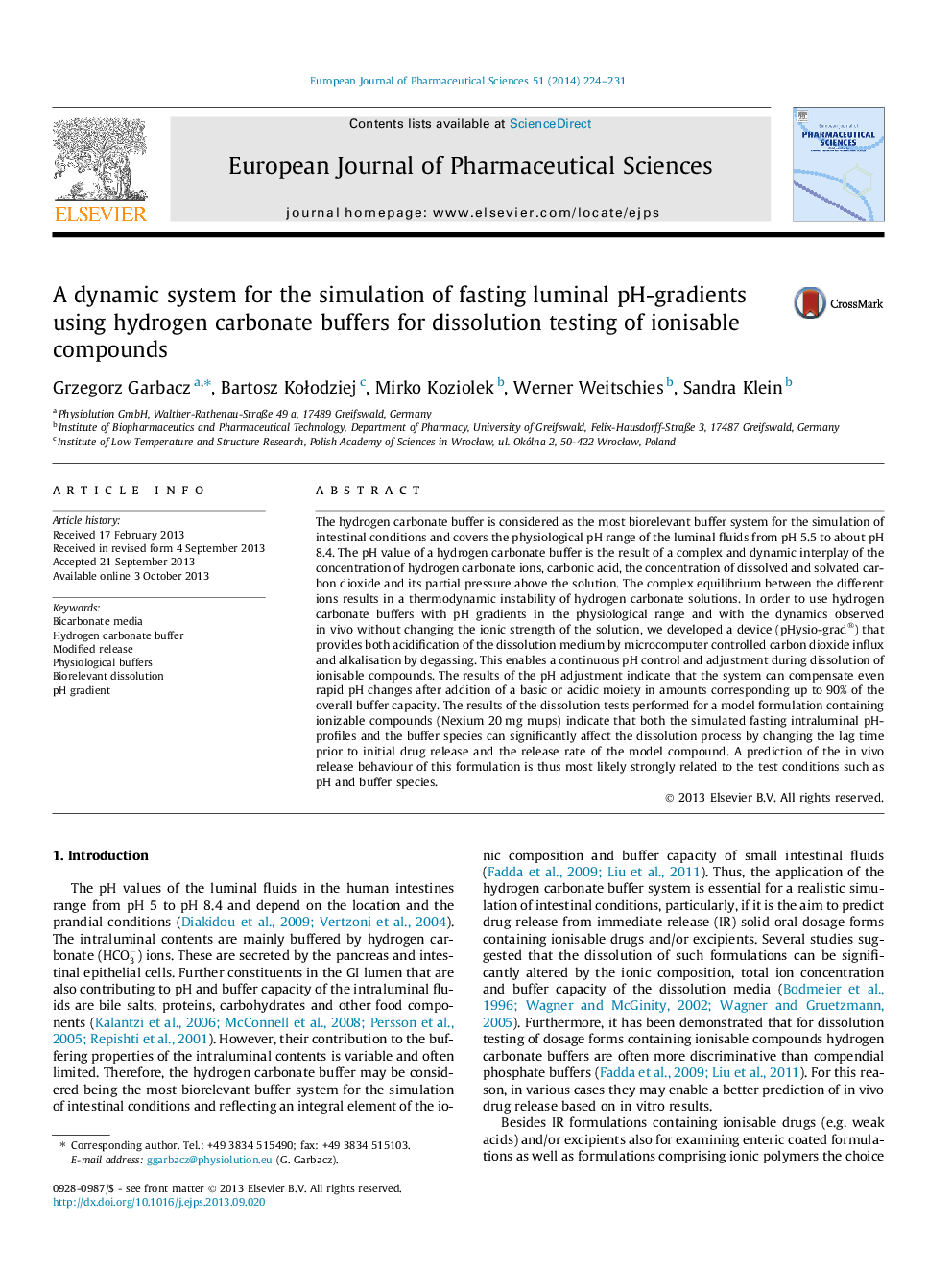| کد مقاله | کد نشریه | سال انتشار | مقاله انگلیسی | نسخه تمام متن |
|---|---|---|---|---|
| 2480641 | 1556199 | 2014 | 8 صفحه PDF | دانلود رایگان |

The hydrogen carbonate buffer is considered as the most biorelevant buffer system for the simulation of intestinal conditions and covers the physiological pH range of the luminal fluids from pH 5.5 to about pH 8.4. The pH value of a hydrogen carbonate buffer is the result of a complex and dynamic interplay of the concentration of hydrogen carbonate ions, carbonic acid, the concentration of dissolved and solvated carbon dioxide and its partial pressure above the solution. The complex equilibrium between the different ions results in a thermodynamic instability of hydrogen carbonate solutions. In order to use hydrogen carbonate buffers with pH gradients in the physiological range and with the dynamics observed in vivo without changing the ionic strength of the solution, we developed a device (pHysio-grad®) that provides both acidification of the dissolution medium by microcomputer controlled carbon dioxide influx and alkalisation by degassing. This enables a continuous pH control and adjustment during dissolution of ionisable compounds. The results of the pH adjustment indicate that the system can compensate even rapid pH changes after addition of a basic or acidic moiety in amounts corresponding up to 90% of the overall buffer capacity. The results of the dissolution tests performed for a model formulation containing ionizable compounds (Nexium 20 mg mups) indicate that both the simulated fasting intraluminal pH-profiles and the buffer species can significantly affect the dissolution process by changing the lag time prior to initial drug release and the release rate of the model compound. A prediction of the in vivo release behaviour of this formulation is thus most likely strongly related to the test conditions such as pH and buffer species.
Figure optionsDownload high-quality image (172 K)Download as PowerPoint slide
Journal: European Journal of Pharmaceutical Sciences - Volume 51, 23 January 2014, Pages 224–231